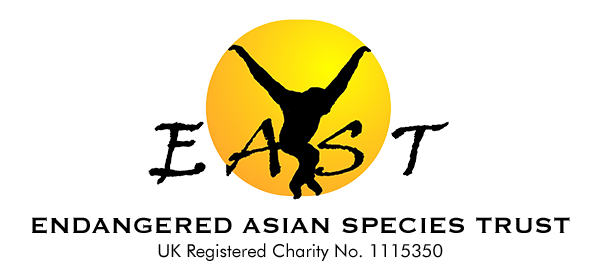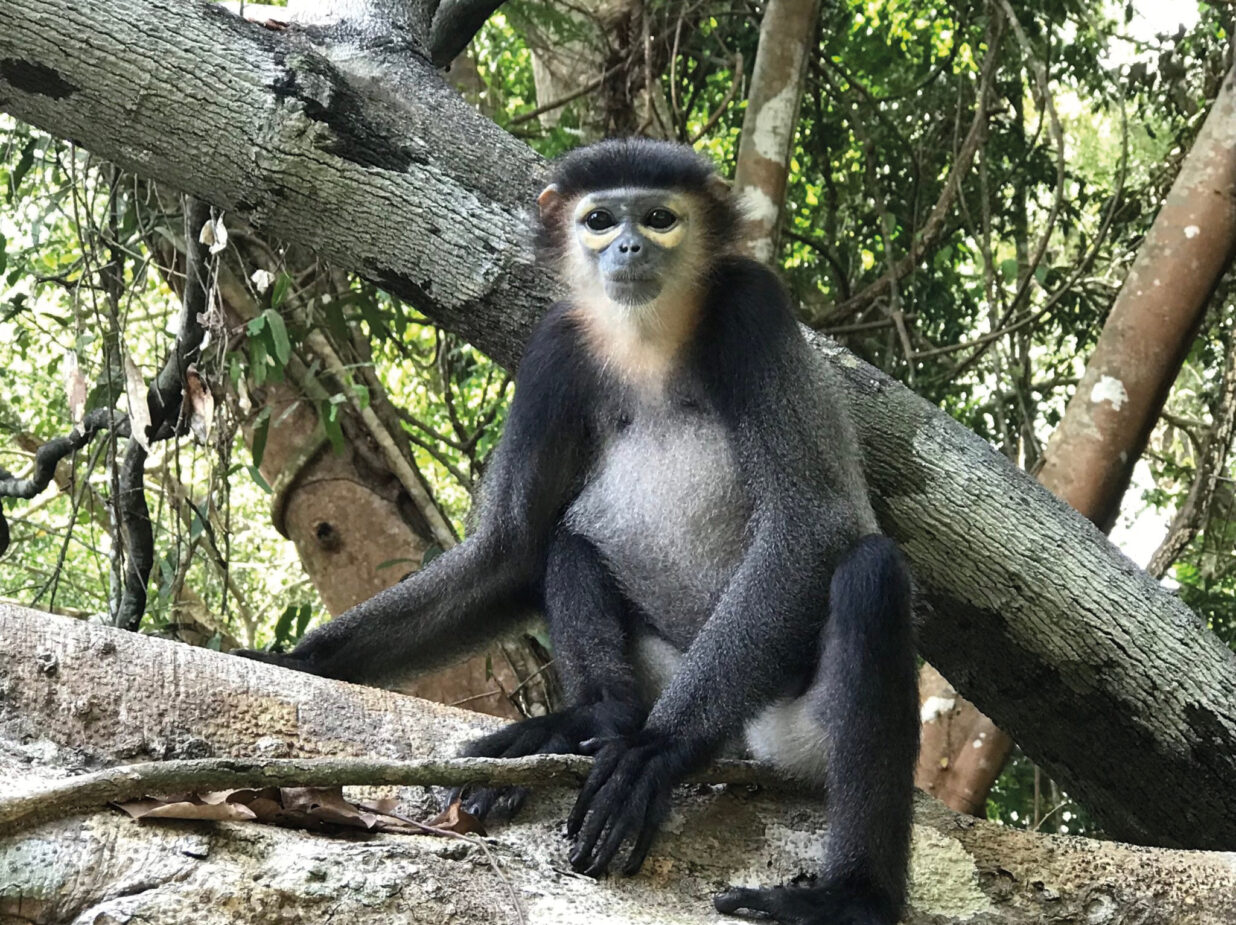The rescue and captive management of douc langurs is incredibly rewarding yet equally challenging as we try to develop protocols for emergency care and rehabilitation through all stages of growth.
With limited wild and captive data on this critically endangered monkey, a lot of our protocols comes from colleagues’ research in Vietnam, our own research, and observations from captivity.
We have adapted protocols to be hypersensitive to infant shock, gut management, the transition from a milk gut to a leaf gut, and increasing extremes in temperature changes with climatic change, which can cause greater sensitivities to pneumonia as the rains still continue in the cold season- something that never happened 20 years ago. Also with the different growth spurts of douc maturing, the sensitive black-shanked need greater nutrition than leaves alone – a more flexible folivore than previously thought. Adolescent doucs need high levels of seeds and nuts, normally eaten in the dry season in Cat Tien to ensure enough nutrition to reach an adult weight.
Then finally coming of age also means sexual maturity.
On Dao Tien we have four black-shanked Peter, Anna and Vu and little Quy, and one grey-shanked, Red. With three of the four are now at breeding age, we’re managing more politics and being mindful to not hybridise the species, so we have separated Vu and Anna off into their own forested enclosure for the last stage of maturity. Wild douc groups are uni-male (only one male) so Peter and Vu would fight. In the forested enclosure, the last close contact to their hand rearing team is removed so they can lose that strong human link. Mr Dong and team who look after the gibbons in the forested enclosure will take over care of Anna and Vu- plus all their extra treats.
Also we had to stop Red, our grey-shanked douc, mating with Anna. This felt harsh as Red and Anna were very close- Anna would prefer Red over Vu. So Red now has the role of being big brother to infant Quy. On November 21st we got the call that an infant black-shanked douc was on its way. We had no details of age, how long he’d been in captivity and, importantly, its health status. On arrival the infant was dehydrated and very weak, and had been held at the ranger station for several days already. The one good thing was that the little male did not have diarrhoea. Our douc team then provided 24/7 care for little Quy (estimated 4-6 months). Worryingly, he was sleepy, very weak, and limp and we were worried he would not live. But he took rehydration fluids hourly and although small, we could see there were improvements. We kept him in full human contact for the first two weeks as we had no other little douc for him to be with and keeping him close meant he was warm and constantly being made aware he was next to something living and still with a family albeit a human family at this stage. As with the other orphans at this critical stage, we took him for walks in the forest. Being under the canopy brings them alive; they wake up and look around, stimulating them to stay alive. Although improving, he would not drink milk- if it wasn’t his mother’s milk he didn’t want any. Concerned he was not getting enough nutrition and was weakening, we gave him boiled sweet potatoes and the daily bites he was taking told us he was hungry. A day cage was built next to Anna, Vu and Red to help keep Quy stimulated. He loved this more than Anna, Vu and Red who were not that interested! Now, over four months on, Quy is thriving and during the day hangs out with adolescent Red. Although tiny next to him, little Quy mirrors his every move, sitting like him & eating leaf with the big boys!

